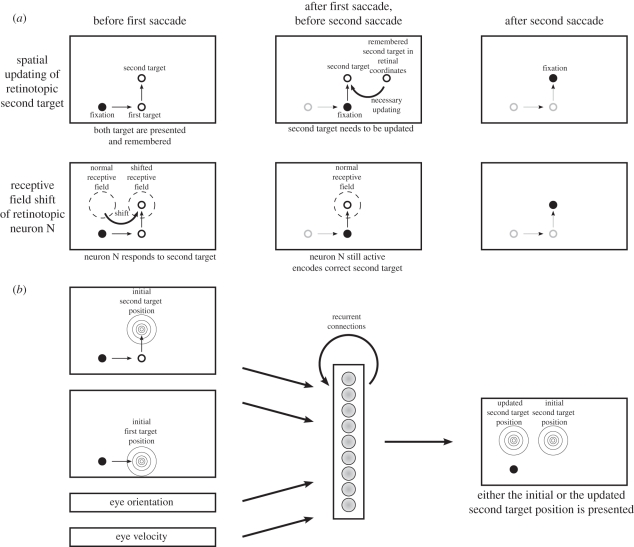Figure 5.
A model for the double-step paradigm. (a) The first row shows how the theory of spatial updating explains that the second saccade in the double-step task lands correctly. Before the first saccade, the second target is represented in retinotopic coordinates (left panel). After the first saccade, the second target is still remembered in retinotopic coordinates and has to be updated (middle panel) in order to yield a correct second saccade (right panel). In contrast, the second row shows the explanation in terms of receptive field shifts. There is a neuron N that has its normal receptive field at the retinotopic position where the second saccade target will be after the first saccade (middle panel). Right before the first saccade, this receptive field shifts, such that the second saccade target at this time falls into it and thus drives the neuron N (left panel). Therefore, this neuron's activity represents the second saccade target correctly after the first saccade (middle panel) and yields the correct second saccade (right panel). (b) A neural network model that can be trained to implement the spatial updating in the double-step task (adapted from [69]). It uses the initial first and second saccade target positions, the eye orientation and velocity to translate the second saccade target position by the inverse of the first target vector.

